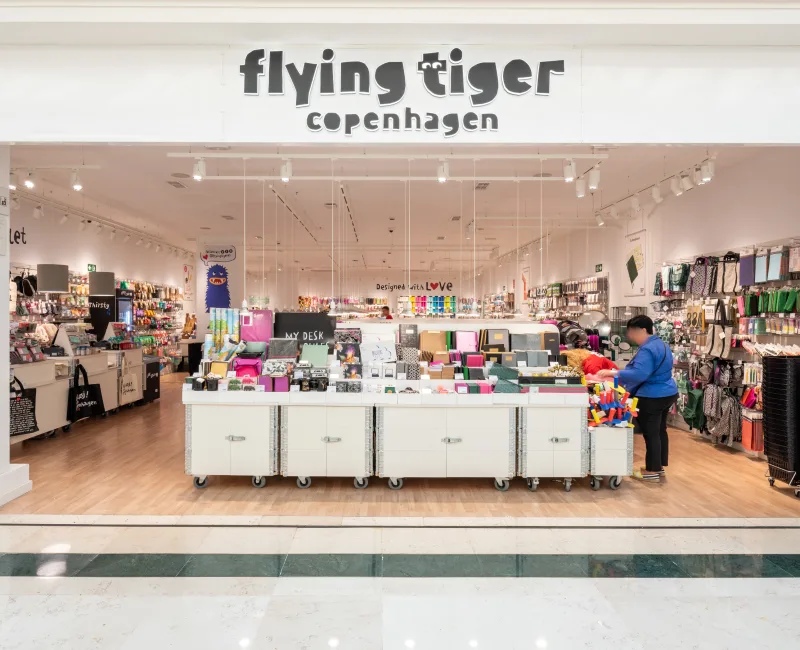NEWS |
New Study On Asia Lifestyle Consumer Reveals Five Main Consumer Personas
Written by Amit Sharma, Community Development Manager
A new report, “Asia Lifestyle Consumer Profile 2022", reveals five leading consumer personas driving consumption trends across Asia in 2022. The report, based on an Asia-wide survey covering 2,100 premium lifestyle consumers across six markets - Mainland China, Japan, South Korea, Hong Kong, Taiwan and Southeast Asia (Singapore and Malaysia), tracks lifestyle consumption drivers & trends in the world’s most dynamic consumer markets. It sheds light on evolving trends shaping consumption across premium and luxury segments, including fashion, accessories & footwear, beauty, fragrance & makeup, active lifestyle, and jewellery & watch.
Against this backdrop of evolving consumer sentiment and behaviours, the report reveals five broad consumer personas driving consumption trends across Asia in 2022.

Experientialist
From culture to entertainment and content, "immersion" is the name of the game for experientialists who want to feel part of a brand's universe. Experientialist consumers appear to embrace a subscription mentality, allaying their fear of missing out (FOMO) by signing up for more and more brand services, newsletters and events.
Neophilist
From niche brands to mix & matched products and the rising pre-owned market, neophilists are drawn to originality. Interest in niche brands that fewer people know about but that offer great style and quality, grew anywhere from 16% to 34% year-on-year, with consumers in Mainland China (89%), Taiwan (88%) and Hong Kong (88%) most keen on niche brands.
Traditionalist
Traditionalists look for the quintessential luxury shopping experience: big names, in-store service and a sense of status. Chinese consumers still lead the continent when it comes to traditional associations with luxury: 94% agree that the reputation of a premium or lifestyle brand is key to them when considering a purchase, while 95% agree that buying luxury makes them feel like they have reached a certain level of success. Interestingly, South-East Asia (Singapore and Malaysia) itself saw a surge in respondents agreeing that reputation is key (+12% year-on-year), yet the opposite trend is true when it comes to consuming luxury for status and self-reward
Idealist
Idealists want to feel good about their purchase and care about brands' ethics and values – but may still be driven by other priorities. In the survey, over 80% of consumers in all markets except Japan agree that they will make sure a brand’s products are responsibly sourced before they purchase
Comfort-me-ist
From their body to their home, consumers are paying attention to clean and natural options to feel healthier and more comfortable. The pandemic gave rise to a wave of interest in self-care (both physical and mental), which appears to remain strong in 2022. Herein, Chinese consumers lead in terms of interest across healthy/active lifestyle products (95% of respondents).
Additionally, the report also highlighted insights for the Asian market:
- Across all markets in Asia, consumers are increasingly showing interest in niche brands that fewer people know about, but that offers great style and quality. The biggest year-on-year increases in consumer interest for this brand category are found in Mainland China (+34%), Taiwan (+31%) and Japan (+31%).
- Second-hand products are also slowly winning hearts, again with a year-on-year increase in consumer openness across all markets, led by the largest increase in interest from Japan (+22%) and Taiwan (+26%).
- Meanwhile, demand for brand experiences (through events, tech, entertainment, and gaming) continues to grow, with the highest year-on-year increases in consumer interest in Japan (+27%) and Hong Kong (+8%).
- Interest in home entertainment & home spa is gaining traction in Japan (+7% interest year-on-year) while losing ground in South Korea (-11%) and South-East Asia (-8%).
- Finally, interest in products associated with a healthy/active lifestyle is down overall, with the biggest year-on-year decreases in interest in South Korea (-8%) and Taiwan (-6%).
The major channels of influence across the study were (44%) social networks, (31%) websites, and (27%) friends and family are the most influential channels for brand preference and purchasing decisions. Similarly, among the major channels of purchase online channel purchasing channels are most popular among consumers of skincare, makeup, and fragrance products. Offline remains the main channel of choice for jewellery & watch shoppers. Overall, however, most consumers prefer a mix of both.
You Might Also Like

NEWS | 16 December 2024
Spartans Boxing Club: From Singapore to Global Expansion
As the world of fitness continues to evolve, one name stands out for its innovative approach and rapid expansion: Spartans Boxing Club. From humble beginnings, this boutique boxing club has grown into

NEWS | 5 April 2023
Flying Tiger Copenhagen To Use Franchise Model to Open 1000 New Stores in Southeast Asia
Flying Tiger Copenhagen, the popular Danish design and homeware store, is set to expand in Southeast Asia through a franchise model, opening up 1000 new stores

NEWS | 4 April 2023
73% OF CONSUMERS IN ASIA PACIFIC & JAPAN (APJ) MAY STOP USING BRANDS THAT DON'T PERSONALISE THEIR EXPERIENCES
Consumer patience in APJ is low — 73% will stop using brands if their experience is not personalised .
Latest on TFA

SUCCESS | 20 November 2025
Omoté: Singapore’s Beloved Modern Japanese Eatery Lands in the Philippines
Omoté has long been one of Singapore’s most beloved modern Japanese dining spots, well-known for its generous chirashi bowls, progressive Japanese flavors, and its philosophy of serving quality food a

SPOTLIGHT | 14 November 2025
From a Small Dream to a Big Movement: The Story Behind Smashed
Some brands start with capital. Others start with credentials. Smashed started with heart.

SUCCESS | 6 November 2025
From Gold Shop to Convenience Stores: Mr. Nallakaruppan’s 23-Year Journey with 7-Eleven
When Mr. Nallakaruppan first stepped into the world of business, it was anything but predictable. He ran a gold retail shop, moved into trading, operated a bar, and even managed a petroleum cleaning s